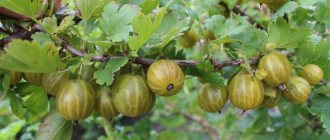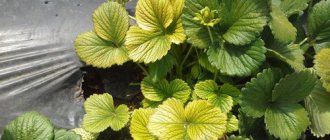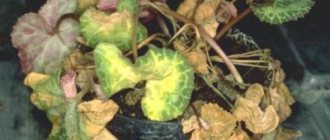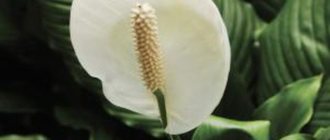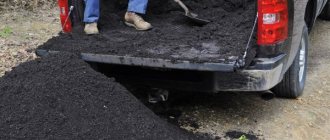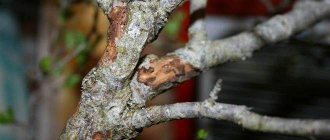Why do plum fruits fall off?
There are many reasons why plums fall off.
Every gardener dreams of a rich harvest
These include freezing during flowering, problems with pollination, lack of moisture and nutrition, diseases, pests, too abundant a harvest, unfavorable weather, especially during the flowering period, and drying out of the tree. If spring flowering is successful, the reasons for fruit drop may be as follows:
- Little ground moisture. Plum fruits appear in early June, and at this time there are often droughts. Because of this, the plum roots have nothing to feed the growing fruits, they do not have enough resources, the result is a fallen ovary.
- Excess water. This also has a detrimental effect on the root system. The root begins to rot, followed by shedding of the crop.
- Pests. A frequent “guest” on the plant is the plum sawfly. Pest larvae love unripe pulp and seeds of unripe embryos. This is the reason why plum fruits fall off before ripening.
Plum diseases - the cause of carrion
Unfortunately, our fruit trees (including plums) can be attacked by infectious diseases. Affected, weakened plants drop both fruits and leaves, and in some cases the tree dies altogether. What is wrong with the plum tree?
Fungal diseases
· moniliosis (fruit rot, gray rot, monilial burn); polystigmosis or red spotting; Clusterosporiosis; · coccomycosis; · plum pockets; · milky shine; · curly; · rust; · sooty fungus.
Bacterial diseases
· bacterial spotting; · witch's broom.
Viral diseases
Chlorotic ring spot; Sharka (plum pox).
Non-communicable diseases
· gommosis (gum discharge); · drying out.
The list is impressive, isn't it? However, some diseases from this list cannot be treated and can lead to the death of the tree. The gardener’s task is to prevent the disease, or, in extreme cases, catch it at an early stage and prevent its development.
0
Plum moth
Why apricot drops green fruits - common reasons
The plum moth insect is the main pest that causes damage to fruit trees. The habitat is extensive, but is most often found in the southern regions of Russia. The butterfly is grayish in color with a slight brown tint. The larva is a scarlet caterpillar. The activity of the pest is easily determined by drops of gum on the surface of damaged fruit.
The plum moth is more common in the southern regions of Russia
Important! In addition to plums, codling moth larvae eat apricots, pears, apples, cherry plums, peaches, cherries, and other fruits and berries.
The methods of struggle are varied. There are both biological and chemical methods in the arsenal. The biological products “Iskra-Bio” and “Fitoverm” have proven themselves well. The action of the products is based on the death of the pest from the activity of microorganisms that are not harmful to humans. Trees should be treated on a windless and dry day. The disadvantage of bio-treatment is that the reagent is washed off by rain.
Chemical means of protection include Fufanon, Karbofos, Kinmiks and similar preparations. They should be used according to the included instructions.
About the soil and planting site
Plum prefers soils that do not grow delicate garden crops. It is suitable for clayey, loamy, sandy substrates, without an aquifer located close to the surface (above 2 m) and strong acidity.
You can neutralize the soil with a mixture of wood ash, chalk and lime (in a ratio of 1 * 3 * 1) or dolomite flour. By the way, ash is a complex substance; it enriches the soil with potassium, the main element of plum nutrition.
Plum plantings should grow in places with uniform lighting throughout the daylight hours, without drafts or gusts of wind.
Wind and strong temperature changes sterilize pollen. Plum trees cannot be planted between a fence and any buildings. There is enough sunlight for flowering, but not enough for fruit formation.
Poor pollination
Plum crop failure is often caused by insufficient pollination. Crop varieties are divided into 4 types:
- self-pollinating;
- partially self-pollinating;
- sterile;
- barren.
Plum fruits rot on the tree - what to do and possible causes
Plum blossoms cross-pollinate, and bees are best suited for this. In early spring, during flowering, cold snaps occur and bee activity decreases.
Self-pollinating varieties are guaranteed to produce a good harvest of large fruits; they are not hindered by bad weather. Cross-pollination of even self-pollinating varieties allows you to get the maximum number of ovaries in the spring and a guaranteed harvest in the summer. Other varieties of plums do not form an ovary at all during pollination.
Note! The distance between drains should not be more than 10 meters.
Fighting ticks and sawflies
- Gall mite and red garden mite. They can cause significant damage to the crop (up to 30%). The juice is sucked out of the leaves, resulting in drying out and falling of the leaves, the hearths themselves wrinkle and dry out. During the summer season, from four to seven or eight generations can change. In the spring, before the plum blossoms (when the first generation begins to work), the trees need to be treated with insectocaricides (Danadim, Fitoverm, Fufanol).
- Cherry slimy sawfly. From the eggs laid on the leaf, larvae hatch, eating the foliage down to the veins. They turn into pupae, some overwinter, and some go through a new life cycle in August, causing even more damage. The means of control before the plum tree has not yet bloomed is spraying with “Karbofos”, “Kemifos”, “Rogor”, as well as biological products - “Entobacterin”, “Lepitotsid”. Tinctures of wormwood and tobacco, along with autumn digging of the soil, are sufficient for small colonies.
- Yellow plum sawfly, black plum sawfly. Causes enormous damage to the plum tree. The female, laying eggs, eats through the passages inside the flower, the ovary does not develop and the flower falls off, and in the developed ovary the larvae gnaw through the seeds, the fruit falls off. Control measures - until the plum blossoms, when the buds turn pink, spraying with “Karbofos”, “Entobacterin”, “Lepitotsid” is effective. Loosening the tree trunks and digging up the soil reduces the number of dormant larvae. Shaking females onto the bedding in the morning (at high humidity) gives good results.
Plum sawfly
Why does azalea shed leaves and what to do at home
This insect is the most dangerous for plum trees. Having settled on plants, it destroys them. The crop stops bearing fruit or spoiled fruits are formed that do not have time to ripen. If every year more and more wormy fruits appear, the lion's share of which fall green, this is the work of the black or yellow plum sawfly.
The sawfly is the most dangerous insect for plum trees
There are two ways to combat sawfly:
- Mechanical. Its essence is to remove fallen fruits and then dispose of them. The plums are burned or boiled and then buried in the ground to a depth of more than half a meter. At the beginning of summer, all wormy and fallen plums should be removed. The pest larvae are dealt with by digging up the area near damaged trees in the autumn. When frosts occur, the larvae die.
- Chemical. Chemicals are used in the form of acaricides and insecticides. The most common is “Karbofos”. The drug is used in concentrations up to 0.3%. Trees are sprayed at the end of spring, about a week before flowering begins. Repeated treatment should be done at the end of flowering.
Note! It is impossible to defeat the sawfly without insecticides.
Climate and its influence on the plum harvest
The plum came to the Non-Black Earth zone of Russia much later than the cherry. In this regard, it should be noted that in some, more northern regions, this crop freezes significantly. Frequent frost damage to the trunks and freezing of young shoots greatly weakens the trees, which leads to a decrease in yield.
Always choose zoned varieties for planting. When purchasing seedlings, try to contact local producers of planting material.
However, even when purchasing zoned varieties, it cannot guarantee protection from frost damage. One way to increase the frost resistance of plums is to carry out autumn watering at the end of autumn, when the leaves begin to fall. You need to water abundantly, but make sure that the water does not stagnate.
If frost holes still appear on plum trees, they should be cleaned and covered with garden varnish. This will prevent the possibility of infection entering the wound. Over time, the wound will heal.
Improper watering
Plum trees can also shed green fruits due to insufficient or improper watering. The roots of the plum tree do not grow deep into the ground, but spread close to the surface. If the surface layer is not well hydrated, the fruit lacks nutrition. This is the answer to the question why the plum crumbles. The fruits will fall until the tree has enough strength to feed them.
It is advisable to water the plum more often and abundantly. Otherwise, the developing ovary will fall immature. In hot weather, if watering is ignored, two weeks after flowering the green plum will begin to fall off unripe. When watering drains, you should consider:
- Regional climate.
- Depth of the aquifer.
- Amount of precipitation.
You should take into account the number of other trees growing with plums - they also lay claim to moisture. Watering should be done to moisten the soil to a depth of up to half a meter. Excessive amounts of moisture will also not bring a bountiful harvest. Plum does not like excessive watering and can shed fruit embryos while still green.
Important! The last watering is done half a month before picking the fruit. Then the plums will be juicy, and the tree will not lose its harvest.
Reason 6: acidic soil
Plum is demanding on soil composition. It is capable of bearing fruit only on soil with a neutral reaction. In acidic soil you need to add wood ash (200-400 g per 1 sq.m.) or slaked lime (300-500 g per 1 sq.m.).
High acidity of the soil in an area can be determined by several signs: a whitish “ashy” layer is noticeable on the soil surface; clover is absent or grows very poorly; Moss, sorrel, wild rosemary, heather, buttercups, horsetail, white grass and other plants that prefer acidic soil are actively growing.
- Soil acidity: determine and regulate
If your soil is highly acidic, this can seriously harm your plants. How do you know when it's time to take action?
Spring frosts
Protecting trees from frost in the spring using smoke is not always effective. The most effective method is to delay flowering. To delay the appearance of flowers on plum trees in the spring, in the fall the soil near the tree trunks should be mulched with peat to a depth of 15 cm. Unfortunately, by January this layer freezes completely. To prevent this from happening, it is necessary to accumulate a layer of snow up to 40 cm thick in the tree trunk area. Cover it all with a layer of sawdust up to 15 cm, then another layer of snow.
Spring frosts during tree flowering are very dangerous
With the arrival of spring, the snow laid on top of the sawdust melts quickly, and the one under it lies longer. Under this snow, in a frozen state, there is a mulch layer and soil with a root system. As the temperature rises, all layers of the soil gradually thaw, delaying the development of the plant for a period after which stable warmth sets in.
Despite the warming, flowering is delayed until the second half of May after the trunk layer of the winter “pie” has thawed. In this way, it is possible to avoid the fatal cold for the ovaries of most fruit trees, plums are no exception.
The plum sheds the ovary after flowering as a result of non-pollination.
If a plum or cherry plum drops very small ovaries immediately after flowering, most likely the tree is getting rid of barren flowers - unpollinated flowers. This phenomenon may be associated both with the absence of a cross-pollinator (if the variety is not self-fertile), and with the treatment of the garden with insecticides during flowering, when pollinating insects die along with the garden pests.
Prevention of this problem consists of following several rules:
- Do not use herbicides during flowering
- Attract pollinating insects to the site. Plant flowers in tree trunks, spray the tree with a weak solution of honey.
- Plant several varieties of plums in the garden. If this is not possible due to limited space, you can graft another variety onto one of the branches.
- Use artificial pollination.
Fungal diseases
The fungal disease quickly conquers trees, spreading to neighboring plants. High humidity and temperature, dense crown are excellent conditions for fungus. Rainy and warm summers are most conducive to this. The main weapon is fungicides.
Fungal diseases can destroy the entire crop
Most often, plums are affected by the following fungi:
- Coccomycosis is dangerous mainly for the leaves of the crop, but sometimes the ovaries and shoots are affected. Symptoms of the disease are red-brown or purple spots. To combat, a 1% solution of copper oxychloride or Bordeaux mixture is used.
- Rust affects the green part of the plant and prevents the fruits from ripening. Symptoms: red (rusty) spots. Treatment is a 1% solution of copper sulfate or Bordeaux mixture.
- Gnomoniosis (brown spot) - red-brown spots on the leaves. Treatment – 1% solution of copper sulfate.
- Clusterosporiasis - brown spots with a framing red border. Symptoms: holes appear in the leaves, and after a while the entire above-ground part of the plant is affected. Treatment is a 3% solution of Bordeaux mixture. It should be applied in the fall after the leaves have dropped.
Diseases and pests
Fruit shedding is caused by pests and diseases. Dangerous pests include:
- Sawfly. The butterfly lays eggs during the flowering stage of the plant. The first caterpillar eats the inside of the cream with the pit, emerges and pupates. Then the process is repeated. If protective measures are not taken, several generations of pests parasitize the plum tree over the course of a season.
- Plum moth. It acts in the same way as the sawfly. But it damages the ovaries and the pulp of the cream. The fruits do not ripen and fall off.
- Centipede. The butterfly lays eggs on trees that have just bloomed. The caterpillar eats the green seeds. The fruits fall off.
See also
Description and characteristics of the Soneika cherry plum variety, planting and care rulesRead
Disease of the tree with scab and fungal diseases weakens the tree, and it drops damaged fruits.
Shortage and excess of fertilizers
The lack of fertilizers affects the growth of the crop and its development; the excess is deposited in fruits and, as a result, enters the human body. Maintaining balance is very important. To determine the lack of feeding, the crown of the tree is studied.
In case of deficiency:
- nitrogen - weak green mass, sluggish growth, pale green foliage or small yellow leaves, medium-sized fruits;
- potassium – dry fragments on the leaves, unevenness of their formation, deformation, leaves have a chlorotic color;
- phosphorus - early shedding of leaves, late flowering, ripening and fruiting, dull color of plums, yellow shades of leaves.
- magnesium - spruce leaf color, leaf veins are brown.
Note! The deficiency of elements on the first blossoming leaves is more noticeable.
Excess nitrogen leads to significant growth, lack of flowers and embryos. The tree seems to be fattening. By winter, the shoots do not ripen and freeze slightly, gum formation appears, and frost marks can form on the drain in any part.
What to do if a plum crumbles.
Abundant plum blossoms do not always guarantee a good harvest. The berry may crumble, completely discarding unripe fruits that are unsuitable for use. We will tell you how to identify and eliminate the cause of plum falling in order to preserve the harvest.
There may be several reasons for the fall of unripe fruits. In some cases, they can combine and increase the negative impact. Ultimately, this leads to complete loss of the harvest, and sometimes to the death of the tree.
We identify signs of diseases and pests
First of all, carefully examine the tree, check for any symptoms of disease or signs of pests. Small brown or yellow spots on the leaves and their wavy edges indicate infection with brown spot, which significantly weakens the tree.
Plum crumbles during fruiting period
The silvery tint of the branches is the first sign of the activity of gall mites. They feed on plum juice and can cause the tree to drop fruit, as it directs its energy to restore the lack of nutrients.
Plum affected by gall mite drops berries
If signs of diseases and parasites are detected, treatment should be started immediately; preventive spraying is also recommended if they are absent. Every month during the spring-summer period, treat the plum with biological preparations: Fitoverm, Agravertin, Akarin, in accordance with the instructions. Treatment with Bitoxibacillin before flowering helps. To increase disease resistance, the tree can be treated with a solution of Zircon or Ecoberin during fruiting.
Plum aphid
To control aphids, consider the severity of the infestation, weather, height of the plum tree and personal preference. Both folk remedies and chemical ones can be used. Aphids suck out juices, destroy inflorescences, and reduce the tree’s immunity to many diseases. Many species of aphids live on plum trees. You can find out why plum fruits fall by looking at deformed leaves with rot, spots and mold. If action is not taken, the tree's health and productivity will be in doubt.
Plum aphids suck the juices and destroy the inflorescences
Note! Aphids begin to actively reproduce with spring warming, long before the leaves bloom. The pest is active throughout the growing season. In July it lays eggs under the bark near the buds and overwinters in this form.
Mechanically, aphids can be destroyed with a jet of water under pressure. In any case, the infected leaves will fall off, but it is better to pick them off immediately. In autumn, after leaf fall, trees are carefully examined for the presence of aphid eggs. The soil around the trunks is dug up, sprinkled with ash and watered with hot water. Other folk remedies used to combat aphids include vinegar, tar soap, garlic, and ammonia.
What diseases can lead to drying out?
These diseases include verticillium, plum pox and late blight.
Verticillium wilt
The almost colorless fungus Verticillium dahlia, which lives in the upper layers of the soil, becomes the cause of such a dangerous disease as verticillium.
Sclerotia of the fungus can remain in an inactive state for up to 10 years, but with the onset of favorable conditions (temperature 20, humidity 70-80%) they begin to actively grow. Plant infection occurs through the root system. As a result of the vital activity of the fungus, the blood vessels become clogged, the tree loses the ability to absorb the required amount of nutrients and moisture, and its leaves begin to wither and dry out.
In exceptional cases, infection occurs through open cuts and wounds on the plum, so after pruning, all cuts should be treated with garden varnish or paint.
Sharqa or plum pox
Another cause of premature drying and falling of leaves is the viral disease sharka or plum pox. The most common source of infection is:
- pruning plants with an infected tool;
- grafting infected cuttings onto a healthy rootstock;
- transmission of the virus by insects.
The first sign of plum pox is the appearance of light spots and veins on the leaf blades.
To date, plum sharka is not treatable. The only way to contain the disease is to burn the affected tree.
Viral diseases
Unfortunately, viral diseases of plums are incurable in 100% of cases. Virus carriers are birds and insects. Plum pox (sharka) manifests itself in the form of stripes, spots and fruit drop. The virus is widespread wherever plum trees grow. It feeds on the contents of the fruit. This is why plums fall off while still green. Dents appear at the site of the lesion, plums shrivel, become tasteless and cannot be consumed. The affected crop falls from the trees prematurely. It will not be possible to eradicate the virus. A sick tree must be destroyed.
Note! The virus can enter the garden along with seedlings.
Tree dwarfism is caused by a virus that lives in the bodies of birds and mammals. The infection enters the crop stem through contact with them. First, the growth of shoots slows down, then the leaves become deformed and become smaller. Leaves infected with the virus accumulate at the tops of the branches, and the development of new ones is suspended. It is impossible to cure the disease; the result of a viral infection will be the death of the tree. It must be burned along with the root system.
Prevention of diseases and insects
To prevent diseases it is recommended:
- avoid dense plantings;
- carry out regular sanitary and formative pruning;
- remove weeds;
- apply fertilizing in a timely manner;
- remove anthills;
- treat the garden with antifungal drugs.
To combat insects, it is recommended to attract their enemies: ladybugs, antlions.
To prevent pest damage, it is recommended to carry out preventive spraying with insecticides:
- the first after the tree awakens;
- the second at the budding stage (pink bud);
- third after the formation of the ovaries;
- subsequent ones as needed.
Pest and disease control is carried out throughout the year.
Control measures
You can prevent crop loss if you follow a number of measures. The main thing is to water on time. This is especially true in the spring, when trees wake up after winter. The roots of plums lie shallow, so they cannot extract moisture from the ground. In spring, the surface layer dries out quickly, so timely watering is very necessary. Otherwise, the blooming ovary will die.
Fertilizing should also be included in the set of priority measures. A fruit tree can be fertilized with both mineral and organic compounds. They should be diluted in water. Mullein is a good organic nutrient, and two types of mineral nitrate are calcium nitrate and potassium nitrate. Mullein is prepared in the proportion of 1 kg per bucket of water, bird droppings 1:15, saltpeter is diluted at the rate of 1 tbsp. l per 10 liters of water. To feed a young seedling, 30 liters of solution is enough; up to 40 liters should be poured under an adult tree.
The next factor that causes plums to fall before ripening, which you need to pay attention to, is pests. How to deal with them is described above. If the ovary and green fruits still fall off, then spring frosts, poor pollination and a deficiency of magnesium, phosphorus, and nitrogen in the soil may be to blame.
How to choose planting material for plums
Since it is quite difficult to increase the yield of a plum tree that has been bearing fruit for a long time (a whole range of measures is required), it is easier to replace an old tree or simply plant a new one. To determine the variety, it is better to first look through the literature and read articles on the Internet.
Today, there are quite a lot of varieties offered, both self-pollinating, early ripening, and early starting to bear fruit.
Beginner gardeners should be warned: do not buy varieties that you know nothing about, choose proven varieties, it is better to immediately plant several trees with different ripening periods - early, middle and late. Why? Even if among the three varieties there is one self-sterile one, then one of the two remaining will pollinate it.
You can buy seedlings either with a closed (in a container) root system or with an open one (in this case it needs to be checked for integrity and damage by rot).
The thickness of the seedling at the root collar must be at least 14 cm.
It is advisable for gardeners to know that if a plum seedling is not obtained on a rootstock (that is, not grafted), there is a possibility that it is a non-varietal plant or a root shoot of a varietal plant. If you buy root shoots (even super-yielding ones), you need to be prepared for the fact that in a few years the whole garden will be covered in the same shoots; it’s difficult to deal with this - only complete destruction.
Proper plum care
The content of a fruit tree has its own characteristics. Plum loves water. This must be monitored and watered once a week during dry periods. How much to pour is indicated above. If underwatered, the skin of the fruit cracks, and if overwatered, the leaves turn yellow.
In winter, it is advisable to rake and compact the snow around the tree and shake it off the branches. The area near the plum tree should be maintained year-round. It must be at least 2 meters in radius. The soil is cleared of weeds and loosened.
Note! With a bountiful harvest, the load on the branches is greater and they should be supported with supports. Places where supports touch branches should be lined with rags.
The best varietal representatives of Chinese plum
Alyonushka
Self-ripening, early-ripening variety (ripening occurs in mid-August). A medium-sized plant (2 - 2.5 m) with a raised conical crown, normal density.
The fruits are red, do not crack, round in shape, 45-50 mm in diameter, weighing up to 40 grams. Productivity varies from 80 to 190 c/ha.
Juicy orange puree, sweet and sour in taste, similar to cartilage. A small pit is difficult to separate from the pulp.
The Alyonushka variety is suitable both for use as a useful plant and for breeding purposes. Positive characteristics - high competitiveness and excellent fruit taste.
Manchurian beauty
Early ripening variety. The tree has a dense rounded crown and a small height (up to 1.8 m). The bark is rough brown with a gray tint. The dark green leaves are elongated (about 11 cm long) with a characteristic slight shine.
The fruits are not very large and weigh only 15 - 20 grams, round in shape with a flat bottom. The yield is 8-12 kg per box.
The fruits are covered with dense burgundy skin with a thick bluish patina. The dense yellow-green flesh has an inexpressive sour taste.
It has a number of advantages:
- high degree of transportability;
- not very susceptible to disease.
The disadvantage is premature destruction of the fetus.
Ussuri plum
Average ripeness (ripening period from mid-August to September), self-sufficiency. Externally, it is a shrub up to 4 meters high with a leaf density above average.
Fertilization begins 3-4 years after planting one-year-old seedlings and continues for about ten years. The fruits of the Ussuri dome are red or yellow, juicy, ripening does not occur simultaneously, crumble and are not transported at all.
The value of this species lies in its frost resistance, high yield and constant fertility.
Interestingly, in the Middle Ages, manuscripts were written with ink made from resin that protruded from the branches and trunks of plum trees.
Late ripening of Chinese plum (ripening time - early September). The tree grows up to 4 meters in height and has a decomposed, medium-density crown. The round, wide fruits become quite large (weight up to 30 - 35 grams), the waxy skin is light yellow in color with slight redness.
The fruit pulp is fibrous with a sweet-sour, aromatic peach flavor. The yield is uniform and high - 30 - 40 kg per plant.
Medium sized bone doesn't go well with flesh.
Virtues of this kind:
- increased immunity to diseases;
- high safety during transportation.
Precocious
The variety is early ripening (harvest possible at the end of July), self-sufficient (crossbreeding is required). This is a low-growing tree with an extensive willow crown, reaching two and a half meters in height.
The lush flowering period begins at the end of April and completely covers the reddish-brown shoots. The medium-sized fruits are found close together on the branch. One plum weighs 25-30 grams. The quickly grown plum is a high-yielding variety; the yield of the bush reaches thirty kilograms. Fruit shades on wood can have several types - from dense yellow, orange to bright red. The pale yellow flesh is very juicy, medium firm, sweet, with a melon aroma.
Skoroprodna's strength is its excellent storage of fruits for a long period of time at low temperatures. Suitable for deep freezing.
Superior
Partially self-propelled Chinese plum, medium ripe. The industrial conference begins in mid-August.
The fruits are large (60-75 g), orange-red with delicious dessert flesh.
The tree is a medium-sized tree, a prolific and fruit-bearing annual.
To increase productivity, it is necessary to plant a pollinator (cherry plum or Japanese plum) in the surrounding area and cut off the crown annually.
Causes of rot
In order to effectively fight the disease and carry out preventive actions that will prevent the occurrence of infection, you need to know the main causes of rot. Eliminating the causes of moniliosis on plums will help to quickly cure the disease and prevent its spread.
The main causes of this disease are listed below:
- dense plantings - close proximity of trees to each other prevents free air circulation in the plum crown;
- lack of crown trimmings - in too thick foliage, moisture stagnates for a long time after rain;
- planting plums in lowlands or insufficiently lit areas - in such areas there is stagnation of moist air around leaves and branches, which contributes to the development of infection;
- the presence of mechanical damage on the skin of the fruit - they can occur as a result of an attack by pests or hail and facilitate the penetration of fungal spores inside;
- lack of preventive treatments against diseases and pests - while fungal spores in the soil remain viable and begin to multiply with the arrival of spring warmth;
- the presence of fungus-infected leaves and fruits in the soil around the trees - they are a source of infection, since the spores tolerate even long wintering well;
- violation of the rules for applying fertilizers - this reduces the immunity of the crop and makes it more vulnerable to infection.
Important! After working with infected areas of a tree, you need to thoroughly disinfect all garden tools, since microscopic fungal spores may remain on them.

